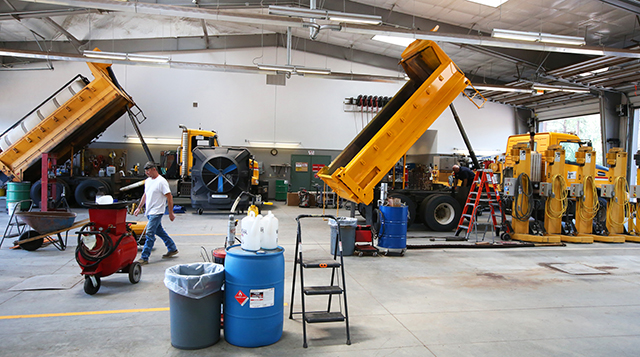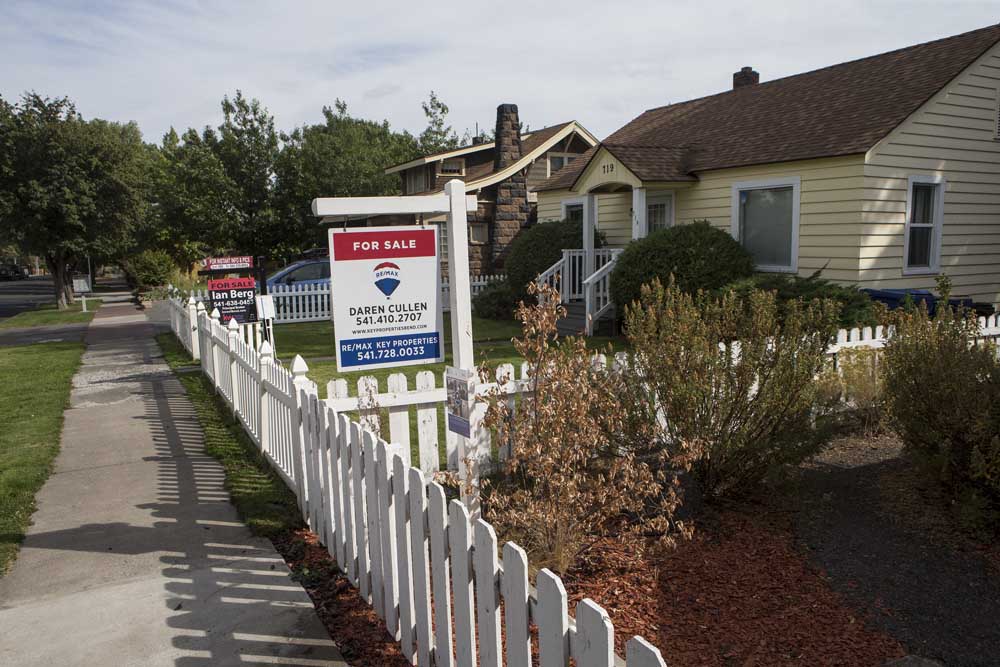Oregon lawmakers agree fighting wildfires requires more money. The hard question: How to pay for it
Published 11:03 am Thursday, February 20, 2025
Gov. Tina Kotek urged lawmakers this week to buckle down and make “hard decisions” about how to increase state funding for wildfire mitigation and fire fighting.
She highlighted a wide ranging proposal by a work group of lawmakers, timber industry representatives, environmentalists and others to divert existing state money streams or come up with new ones, or both, to add nearly $150 million a year to wildfire efforts.
Trending
Lives depend on it, she said.
A group of four lawmakers is tasked with turning those proposals into a funding plan, the details of which have yet to be ironed out. But chief wildfire funding advocates are pulling in different directions.
And fixing wildfire funding is just one piece of a larger puzzle – lawmakers are also grappling with a controversial wildfire hazard map, where to best spend money to harden homes against fires and how much landowners should be required to pay for fire protection.
Tackling those challenges is likely to take all of this year’s five-month session, which is slated to end in late June, House Speaker Julie Fahey said Monday.
“At some point we are going to have to have a cohesive story about all of those things,” Fahey said.
Wildfire insiders have long known that the state’s funding mechanism for preventing and fighting wildfires is complicated and problematic.
Trending
Oregon’s fire agencies routinely draw on their operational budgets to front wildfire bills while they wait for repayment from the federal government, a system that lawmakers and fire agencies have said is unsustainable. That caught up to the agencies last yearafter a record wildfire season left the state with a more than $200 million budget hole.
The Oregon Department of Forestry couldn’t pay all of the contractors that helped quash fires around the state, and lawmakers had to convene a special session in December to cover fire debts.
That was before swaths of Los Angeles burned to the ground, and a worst-case West Coast wildfire scenario seared itself into the public consciousness.
And a wildfire risk map intended to help inform Oregonians and fire fighters about hazard levels property by property has drawn so much ire that lawmakers are calling for the state to blur it so it no longer shows property-specific ratings, or else scrap it entirely.
Several lawmakers have put forward individual wildfire bills this session or staked this issue as a top priority. After Kotek sent her wildfire message to all lawmakers on Monday, Senate President Rob Wagner said that he’d convene a small group of them to work on a cohesive wildfire funding and policy package.
“We have the responsibility to govern, which means looking comprehensively at wildfire prevention, preparation and recovery,” Wagner wrote in a statement Monday. “I applaud Gov. Kotek for her leadership on this issue and giving us the time to have this important conversation.”
Funding solutions
The workgroup convened by the Legislature last year was tasked with pointing the way for lawmakers to raise $280 million each biennium to pay for wildfire prevention and suppression.
Kotek sent a summary of that group’s proposals to lawmakers on Monday. Ideas range from adding a small nonrefundable fee on bottles and cans to taking money from the state’s reserves.
The governor’s recommended budget for the next biennium suggests lawmakers hold back $150 million that would otherwise go into the state’s reserve fund to provide one-time funding to fight wildfires. She told lawmakers to find another $130 million each budget cycle to pay for fire readiness and prevention efforts: “That will, I believe, take ongoing, dedicated new resources,” Kotek wrote Monday.
Just two of the workgroup’s six top ideas propose new revenue streams. One, championed by Ashland Democratic Sen. Jeff Golden, is to keep one year’s “kicker,” a pot of state revenue that exceeds state economists’ official forecast and typically goes back to voters. If the state were to hold back an estimated $1.8 billion kicker that would otherwise go to taxpayers in 2026 and instead put that money in a reserve fund where it generates at least 4% interest a year, that could raise $144 million per biennium to spend on wildfires, the work group estimated.
The other idea for new revenue is to increase the cost of most beverages in bottles and cans by one cent to five cents as a non-refundable fee. A one cent bottle fee would raise $40 million, the work group estimated, and a five cent fee per bottle would raise $200 million.
Other funding ideas would draw from existing state pots. They include tapping the state’s lottery proceeds to pay for wildfire fighting and taking money from an insurance tax that generates roughly $140 million a biennium. Some proposed using a substantial slice of the state’s remaining unspent end-of-biennium general fund to cover about $160 million in wildfire expenses or to authorize a one-time withdrawal from the state’s rainy day savings fund to pay for $323 million in wildfire mitigation and suppression.
Lawmakers who participated in that work group are trying to come up with a bill that cobbles those ideas into a nearly $300 million wildfire funding proposal.
Rep. John Lively, a Springfield Democrat taking the lead on that bill, said he hopes it will be ready by late February or early March.
Lively is keeping his funding preferences close to the chest while he listens to ideas from his colleagues. A representative for Rep. Bobby Levy, an Echo Republican, said Tuesday that she wouldn’t speak to a reporter about the funding bill until her district and caucus have reached a consensus about the path forward, which hadn’t happened yet.
The other two members, senators Golden from Ashland and Stayton Republican Fred Girod, are vocal about their preferences – and have stark differences of opinion.
Golden favors holding back the 2026 kicker, which he argues would keep wildfire needs from drawing too heavily on an already in-demand general fund.
Girod thinks that the state has enough money to foot the bills. He wants to draw wildfire funding from a combination of insurance taxes and lottery proceeds. He said he also agrees with the plan to take $150 million out of the rainy day fund.
The insurance tax generates roughly $140 million per two year budget cycle, Girod said, and dedicating 10% of lottery proceeds to fires would produce another $200 million. Currently, all lottery proceeds are dedicated to other purposes, primarily K-12 schools, natural resources, economic development and higher education.
“I want to fix the problem. There are ways to fix it, it’s just you have to be willing to take some cuts. The general fund is where some of it has to come from, and that’s the rub,” Girod said.
Lively said it’s been clear from the beginning that lawmakers don’t want to draw from the general fund to pay for wildfire efforts, like they had to do during the special session. The goal is to find one or more new resources to help pay for fire mitigation and fire fighting costs, he said.
“At this point, I just don’t know how we will get there – but that’s the goal,” he said Monday.
Golden argues that state lottery proceeds, like the general fund, are under huge competitive pressure. Lawmakers are going to have to figure out how to foot the bill for a massive transportation package that they are prioritizing this session. And Golden is hesitant to draw down the state’s reserve funds when he predicts a “rocky” financial forecast in the years to come.
To achieve his plan to redirect one year’s kicker to pay for wildfire expenses, Golden would need a two-thirds vote of both chambers of the Legislature. He’d have to recruit all Democrats to his plan and earn the votes of at least two Republican senators and four representatives.
When Golden presented this idea in committee two years ago, he remembers a Republican colleague telling him: “That’s the best idea I’ve ever heard that I will never in my life vote for.”
“It faces the obstacle of repeatedly passionate statements that we shouldn’t touch the kicker,” Golden said.
Girod said last week that he hadn’t seen much support for diverting the kicker. But he hadn’t heard much support for the idea of pulling money from the general or lottery proceeds either.
“It’s a question of priorities. We spend billions on… homeless, but we’re not willing to pony up to fight fires, and we just have to do that. It’s just getting worse and worse,” Girod said. “… We’re playing Russian roulette here.”
As of Tuesday, Girod was feeling more optimistic. He’d made some phone calls and heard support for finding some money in the general fund, he said. “I think there’s a pathway forward.”
Golden has flagged that he’s willing to negotiate.
“I simultaneously, really believe that the kicker should be a component and committed to working with my three colleagues the best I can to put together a consensus” he said. “That means flexibility on all parts, including mine.”
Policy problems
Lawmakers and advocates also say several wildfire policy issues need to be addressed this session, including reworking a highly controversial wildfire risk map.
In 2021, the Legislature tasked the Oregon Department of Forestry and Oregon State University with developing a map to show Oregonians how much of a wildfire risk each property faces. The latest iteration, released in January, would also be used to decide where to prioritize fire mitigation efforts and which property owners would be subject to home hardening requirements.
But it prompted huge pushback from rural property owners and lawmakers who interact with them.
Republicans argue it is “riddled with inaccuracies and threatens the property values and livelihoods of rural homeowners.” Homeowners fear that insurance companies have used the map to change their premiums or deny coverage. Under state law, insurance companies are prohibited from using the map for that purpose, and the state’s Division of Financial Regulation argues they never have.
But amid frustration from Democrats and calls from Republicans to repeal the map, Kotek announced Monday that the state would pause its process for handling map appeals while lawmakers figure out what to do.
Oregonians who want to challenge their home’s wildfire classification on the map still have to submit an appeal by March 10. But the state won’t process those until after the 2025 legislative session.
The funding work group has also urged lawmakers to revisit the way landowners are charged for fire protection. Public and private landowners and homeowners who fall within the boundaries of an Oregon Department of Forestry fire protection district pay varying per-acre fees based on the kind of land they own. Ratepayers say the fees have become too expensive and volatile and are dissuading landowners from wanting to participate in the protection districts.
Former Sen. Elizabeth Steiner, now the Oregon state treasurer, led a charge to relieve some of this pressure last year with a bill to create a $10 fee for all property owners to pay for fighting wildfires. Critics of the bill argued that it asked Oregonians to foot the bill for protecting private timberland, the Oregon Capital Chronicle reported. The bill stalled in committee.
The work group has a smaller subcommittee that is still working on proposals to fix the ratepayer issue. It agrees broadly that landowners have to have some kind of rate relief, the report says.
“We have reached an untenable position for the ratepayers,” Unity rancher and former state wildfire advisory council chair Mark Bennett said at that January meeting. His payment to the forestry department surged 40% this year, he told group members.
“All fire service needs funds,” he added. “We’re sucking dry one group out there: the ratepayers.”








